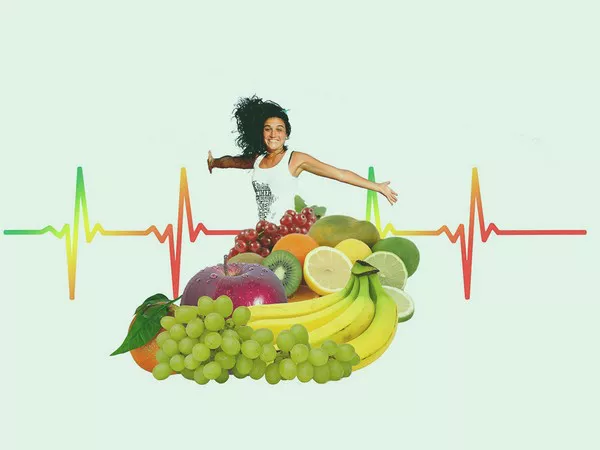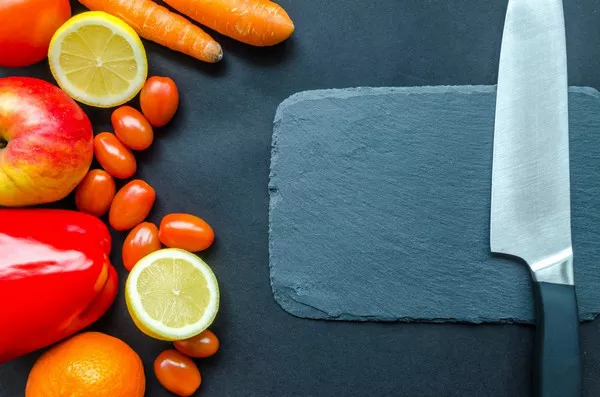A gluten allergy, or more accurately, gluten intolerance or sensitivity, is a condition where the body has an adverse reaction to gluten – a protein found in wheat, barley, rye, and oats. While some individuals experience life-threatening reactions due to celiac disease, others may suffer from non-celiac gluten sensitivity, where symptoms are milder but still impact daily life. In either case, the primary treatment is to avoid gluten-containing foods and products to prevent discomfort and long-term health issues.
This article will explore what gluten is, the differences between a gluten allergy and celiac disease, the symptoms of gluten intolerance, and, most importantly, what foods and products you should avoid if you have a gluten allergy. The goal is to provide a comprehensive guide to help you navigate daily life while managing this condition effectively.
What Is Gluten and Why Do Some People Have an Allergy to It?
Gluten is a group of proteins found in wheat, barley, rye, and oats. It gives dough its elasticity and helps it rise and maintain its shape. However, for some individuals, consuming gluten triggers an immune response that can lead to a range of symptoms. These symptoms may vary in severity, from mild digestive discomfort to more severe, systemic effects.
Gluten allergy is often used interchangeably with gluten intolerance, but it’s important to differentiate between gluten intolerance, celiac disease, and wheat allergies.
Celiac Disease vs. Gluten Sensitivity
Celiac Disease: This is an autoimmune condition where ingesting gluten damages the small intestine. Over time, this damage can lead to malabsorption of nutrients, weight loss, anemia, and other severe complications. People with celiac disease must completely avoid gluten to prevent serious health consequences.
Non-Celiac Gluten Sensitivity (NCGS): People with NCGS experience symptoms similar to celiac disease (e.g., bloating, gas, abdominal pain) but do not have the autoimmune response or intestinal damage seen in celiac disease. It is less understood but requires gluten avoidance to manage symptoms.
Wheat Allergy: This is an allergic reaction to proteins found in wheat, including but not limited to gluten. It can cause symptoms such as skin reactions, difficulty breathing, or anaphylaxis.
While both celiac disease and gluten sensitivity require the avoidance of gluten, celiac disease poses a more serious risk of long-term health complications.
Symptoms of Gluten Allergy or Intolerance
The symptoms of a gluten allergy or intolerance can vary widely from person to person. Some individuals may experience gastrointestinal distress, while others may have neurological, skin, or joint-related symptoms. Common symptoms of gluten intolerance include:
Gastrointestinal Issues: Bloating, diarrhea, constipation, nausea, and abdominal pain.
Fatigue: Feeling unusually tired, often after eating gluten.
Headaches: Frequent headaches or migraines are common.
Joint Pain: Unexplained aches and pains, particularly in the knees, hips, and wrists.
Skin Reactions: Itchy skin rashes, eczema, or hives.
Mood Disturbances: Anxiety, depression, and irritability are frequently reported.
Nutrient Deficiencies: People with celiac disease, in particular, can experience deficiencies in iron, calcium, vitamin D, and B12 due to malabsorption.
The severity of these symptoms can range from mild discomfort to more debilitating effects. It’s important to note that while these symptoms may be associated with gluten, they can also be caused by other conditions, so proper diagnosis by a healthcare professional is necessary.
What to Avoid If You Have a Gluten Allergy?
If you have a gluten allergy or intolerance, avoiding gluten is essential to managing your condition and preventing symptoms. However, gluten is present in many foods and products, making it challenging to navigate daily life. Below is a detailed guide on what you should avoid if you have a gluten allergy:
1. Gluten-Containing Grains
The first step in managing gluten allergy is to avoid grains that contain gluten. These grains should be completely eliminated from your diet:
Wheat
Wheat is the most common source of gluten and is found in many food products. This includes:
Bread and rolls
Pasta
Cakes, cookies, and pastries
Breakfast cereals
Crackers
Pizza dough
Flour tortillas
Wheat is also used in many processed foods as a thickener or binder. Be sure to check food labels carefully for wheat flour or any derivatives.
Barley
Barley is another grain that contains gluten and is often used in:
Beer and malted drinks
Soups and stews (often as a thickener)
Breakfast cereals (such as barley flakes)
Some processed snacks
Barley should be avoided in any form if you have a gluten allergy.
Rye
Rye is commonly used in:
Rye bread
Rye crackers
Some breakfast cereals
Rye should be completely avoided, just like wheat and barley.
Oats
Oats are naturally gluten-free but are often processed in facilities that also process wheat, barley, and rye. This can result in cross-contamination. Therefore, if you have a gluten allergy, you should avoid regular oats unless they are specifically labeled as gluten-free oats.
2. Processed Foods and Packaged Goods
Many processed foods contain gluten as a hidden ingredient. Gluten is often used as a stabilizer, thickener, or flavor enhancer in packaged products. Some foods to avoid include:
Processed meats: Sausages, hot dogs, and deli meats often contain gluten as a filler or binding agent.
Canned soups and sauces: Many canned products, including soups, sauces, and gravies, use wheat as a thickening agent.
Snacks: Chips, pretzels, and some candy bars often contain gluten.
Frozen meals: Many frozen dinners and ready-to-eat meals contain gluten in sauces, gravies, or breading.
Always check food labels for gluten-related ingredients like wheat flour, barley malt, or hydrolyzed wheat protein.
3. Beer, Malt, and Alcoholic Beverages
Many alcoholic beverages, particularly beer, are brewed with gluten-containing grains like barley and wheat. Therefore, individuals with a gluten allergy should avoid the following:
Beer (unless labeled as gluten-free)
Malt beverages (such as malted milk drinks or malted sodas)
Whisky or vodka (though some are distilled from gluten-containing grains, they may still be safe for some people with a gluten allergy; however, caution is advised)
There are gluten-free alcoholic options available, such as wine, cider, and some specialty beers made from gluten-free grains like sorghum, rice, or buckwheat.
4. Baked Goods and Desserts
Many traditional baked goods contain wheat and other gluten-containing ingredients. Avoid:
Bread (white, whole wheat, sourdough, etc.)
Pastries (cakes, cookies, muffins)
Pizza and pasta
Croissants, doughnuts, and other fried dough-based items
Gluten-free options for these foods are available and can be made using alternative flours like almond flour, coconut flour, or rice flour.
5. Cross-Contamination Risks
Even if a food doesn’t inherently contain gluten, cross-contamination can still be a risk. For example, food prepared on the same surface as gluten-containing products can cause a reaction. To minimize the risk of cross-contamination:
Use separate cooking utensils: Ensure knives, cutting boards, and cooking pots are thoroughly cleaned after handling gluten-containing foods.
Separate storage: Store gluten-free foods away from gluten-containing foods.
Read labels: Even trace amounts of gluten can trigger symptoms, so always ensure foods are certified gluten-free.
6. Personal Care Products and Medications
Gluten can also be found in some personal care products, such as lotions, shampoos, and even certain medications. While gluten in personal care products is unlikely to cause a reaction when applied to the skin, it’s still worth being cautious if you have a severe gluten allergy. Check for gluten in:
Lip balms and lipsticks
Shampoos and conditioners
Moisturizers and hand creams
Toothpastes and mouthwashes
Additionally, some medications use gluten as a binder. Talk to your healthcare provider if you are concerned about the presence of gluten in any prescribed or over-the-counter medications.
7. Gluten-Free Alternatives
Fortunately, there are plenty of gluten-free alternatives available for those with gluten allergies. Some gluten-free options include:
Gluten-free grains: Quinoa, rice, corn, millet, and buckwheat.
Gluten-free flour: Almond flour, coconut flour, rice flour, and chickpea flour.
Gluten-free pasta: Made from rice, corn, or quinoa.
Gluten-free bread: Available at most grocery stores.
Gluten-free snacks: Chips made from corn or potato, gluten-free crackers, and cookies.
These gluten-free foods allow individuals with a gluten allergy to enjoy similar meals and snacks without the risk of exposure.
Conclusion
Having a gluten allergy requires vigilance and careful attention to what you eat, drink, and use on your skin. By avoiding gluten-containing grains, processed foods, alcoholic beverages made with gluten, and other sources of gluten exposure, you can successfully manage your condition and prevent uncomfortable symptoms.
The key to living well with a gluten allergy is being informed, prepared, and proactive in choosing gluten-free alternatives. Whether you’re cooking at home or dining out, always be aware of hidden sources of gluten and make sure to read labels carefully.
With the growing availability of gluten-free products and increased awareness of gluten allergies, managing your condition has become more straightforward. By avoiding gluten, you can lead a healthy and symptom-free life.
Related Topics
































